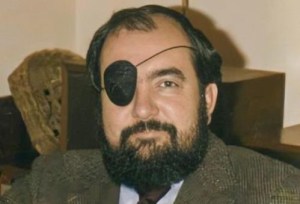We support our Publishers and Content Creators. You can view this story on their website by CLICKING HERE.
Having surveyed the liturgical presence in Medieval and Early Modern literature in my two previous essays, we’ll continue our survey with a review of some of the liturgical highlights in the literature of the modern age. A good place to begin would be the early years of the Catholic literary revival which could be said to have begun with the conversion of John Henry Newman in 1845. Although Newman was a formidable literary presence, writing great poetry, splendid prose, and a couple of novels, our tour of liturgy and literature in the modern age will begin with a novel written by Cardinal Nicholas Wiseman, who was installed as the first Archbishop of Westminster upon the reestablishment of the Catholic hierarchy in England in 1850. Wiseman’s Fabiola: A Tale of the Catacombs, published in 1854, was an historical novel set during the tyrannous reign of the Roman Emperor Diocletian in the early fourth century. One passage, in particular, highlighted the unchanging nature of the traditional liturgy:
We need not remind our readers that the office then performed was essentially, and in many details, the same as the daily witness at the Catholic altar. Not only was it considered, as now, to be the Sacrifice of Our Lord’s Body and Blood, not only were the oblation, the consecration, the communion alike, but many of the prayers were identical; so that the Catholic hearing them recited, and still more the priest reciting them, in the same language as the Roman Church of the catacombs spoke, may feel himself in active and living communion with the martyrs who celebrated, and the martyrs who assisted, those sublime mysteries.
At the end of the nineteenth century, the adoration of the eucharist was celebrated with great eloquence in “Nuns of the Perpetual Adoration” by the poet Ernest Dowson:
A vowed patrol, in silent companies,
Life-long they keep before the living Christ.
In the dim church, their prayers and penances
Are fragrant incense to the Sacrificed.
In another poem, “Extreme Unction”, Dowson muses on the Last Rites, another sacrament of the Church:
Upon the eyes, the lips, the feet,
On all the passages of sense,
The atoning oil is spread with sweet
Renewal of lost innocence.
The feet, that lately ran so fast
To meet desire, are soothly sealed;
The eyes, that were so often cast
On vanity, are touched and healed.
From troublous sights and sounds set free;
In such a twilight hour of breath,
Shall one retrace his life, or see,
Through shadows, the true face of death?
Vials of mercy! Sacring oils!
I know not where nor when I come,
Nor through what wanderings and toils,
To crave of you Viaticum.
Yet, when the walls of flesh grow weak,
In such an hour, it well may be,
Through mist and darkness, light will break,
And each anointed sense will see.
Extreme Unction was also the subject of “Viaticum” by the convert poet and friend of G. K. Chesterton, Theodore Maynard:
How should I face disarmed and unawares
The phantoms of the Pit oblivion brings
My will surrendered, mind unapt for snares,
Eyes blinded by the evil, shuddering wings,
Did not the sunset stand encoped in gold
For priestly offices, ‘mid censers swung,
And with anointed thumb and finger hold
The symbolled Godhead to my eager tongue?
Then with my body’s trance there doth descend
Peace on my eyelids, goodness that shall keep
My wandering feet, and at my side a friend
Through all the winding caverns of my sleep.
Maurice Baring was another convert poet and friend of G. K. Chesterton who celebrated the liturgy in verse. In “Candlemas”, which was the feast day on which he was received into the Church in 1909, he echoes Cardinal Wiseman’s evocation of the essential continuum of the holy sacrifice of the Mass through the ages:
The town is half awake; the nave, the choir,
Are dark, and all is dim, within, without;
But every chapel fringed with the devout,
Is bright with February flowers of fire.
At Mass, a thousand years ago in Rome,
Thus Priest, thus Server at the altar bowed;
Thus knelt, thus blessed itself the kneeling crowd,
At Dawn, within the secret catacomb.
Thus shall they meet for Mass, until the day
The glory of the world shall pass away.
And beauty far away from human reach,
And power, and wealth beyond all mortal price,
And glory that outsoars all thought, all speech,
Speak in the whispered words of sacrifice.
Before concluding, we’ll consider one final poem, “Lenten Illuminations” by Siegfried Sassoon.
Best known as a war poet who had depicted with unflinching candour the horrors of trench warfare during World War One, Sassoon would finally be received into the Church in 1957. As an old man, kneeling in the presence of the Blessed Sacrament in a near empty church during his first Lent as a Catholic, the poet begins by imagining his “unconvert self”, his “unforeknowing Ego”, his “unforseeing sad self” entering the church and being puzzled by the sight of the new convert kneeling in prayer at the altar rail. The remainder of the poem is a meditative monologue in which the Catholic poet muses on his past, wondering what his old self would have thought of the decisive step he had now taken, speaking, as it were, to the very ghost of himself. He recalls that he had always been attracted by the beauty of the Church, in “anthems, organ music, shaft-aspiring stone, / And jewelled windows into which your mind might melt”. But “not in the Crucifix”, not in the light of the cross, the light that shines in the midst of the darkest periods of suffering, not in the “wrought remedial gift of tears”.
Not in the Crucifix. (Though each Good Friday you had felt
Almost unbearable the idea of how He died.)
Forty years earlier, in the stench and animal horror of the trenches, he had been haunted by the crucified Christ. In poems, such as “Golgotha” and “Stand-to: Good Friday Morning”, he had screamed in pain and anger at the Christ who seemed so distant from the suffering of crucified humanity.
“While you were in your purgatorial time,” he tells the ghost of his former self, “In watches of the night, when world event with devildom went dark, / You implored illumination.” But the light was denied by the poet’s own pride, “never being bowed obedient”. Now, however, kneeling in humble submission, the poet recalls the vanity of the false paths taken:
There had been many byways for the frustrate brain,
All leading to illusions lost and shrines forsaken….
One road before us now – one guidance for our gain –
One morning light – whatever the world’s weather – wherein wide-eyed to waken.
The poem’s final lines are poignant with the peace that resignation brings:
I never felt it more than now, when out beyond these safening walls
Sculptured with Stations of the Cross, spring confident, unburdened, bold,
The first March blackbird overheard to forward vision flutes and calls.
You could have said this simple thing, old self, in any previous year.
But not to that one ritual flame – to that all-answering Heart abidant here.
Next week, we will consider the liturgical presence in two great twentieth century novels and in the century’s greatest prose epic.
The Imaginative Conservative applies the principle of appreciation to the discussion of culture and politics—we approach dialogue with magnanimity rather than with mere civility. Will you help us remain a refreshing oasis in the increasingly contentious arena of modern discourse? Please consider donating now.
The featured image is “Reading on the Garden Path” (1883) by Albert Aublet, and is in the public domain, courtesy of Wikimedia Commons.

 Conservative
Conservative  Search
Search Trending
Trending Current News
Current News 






